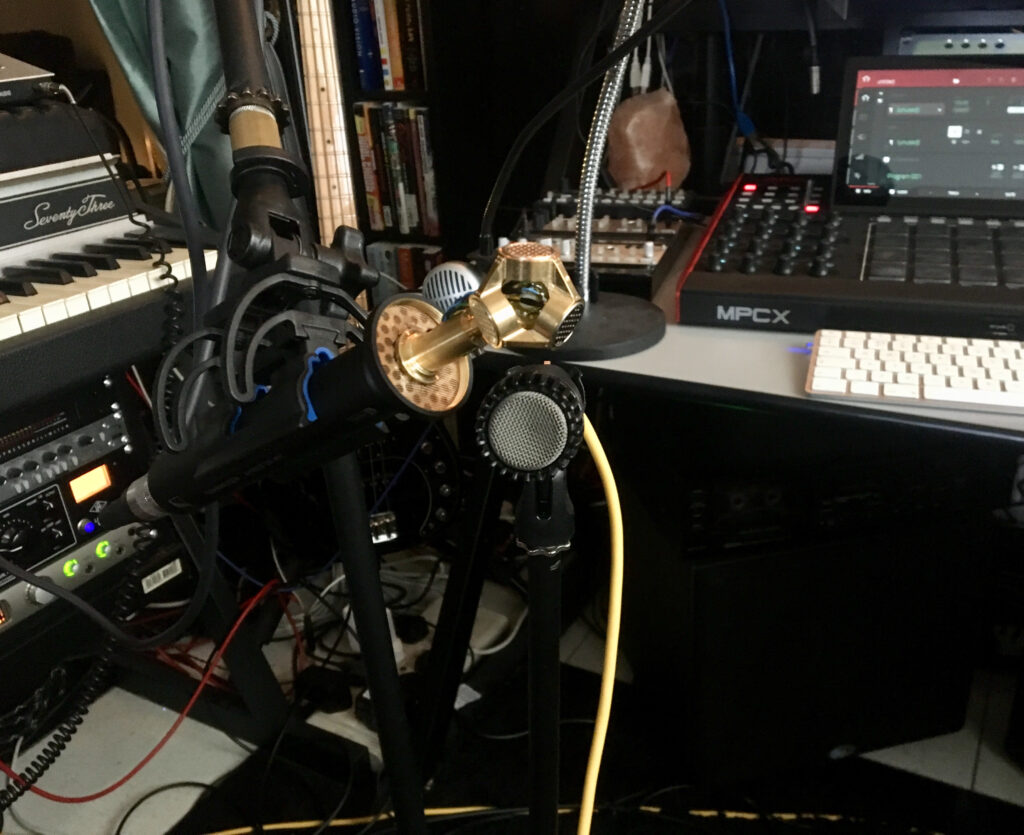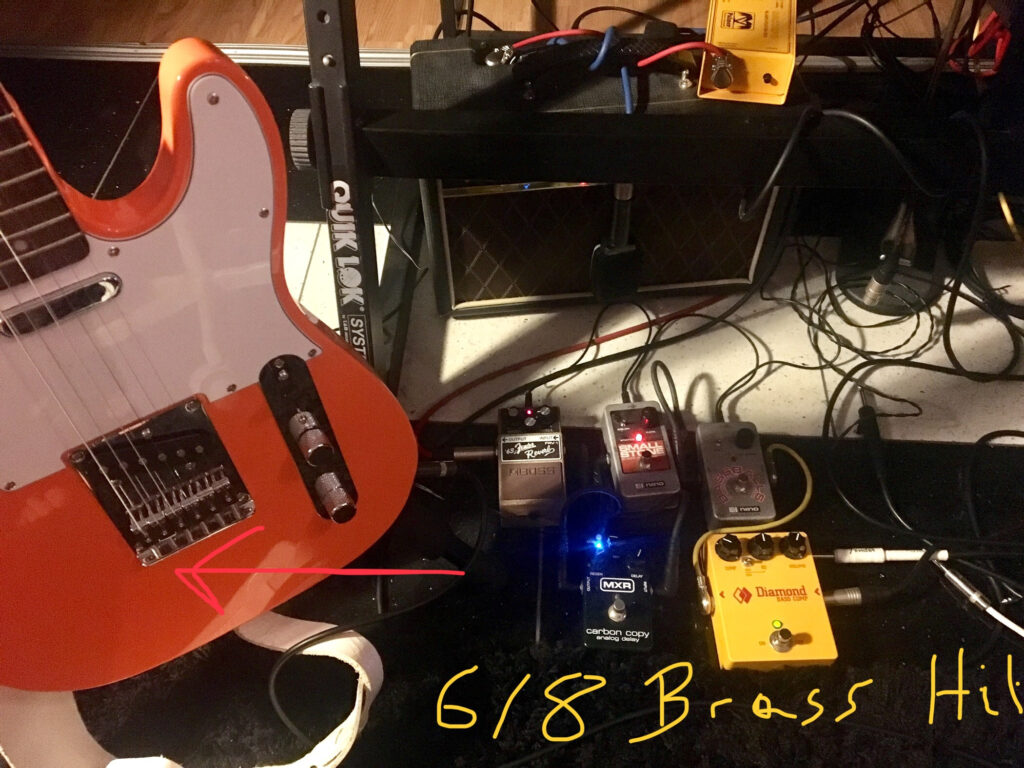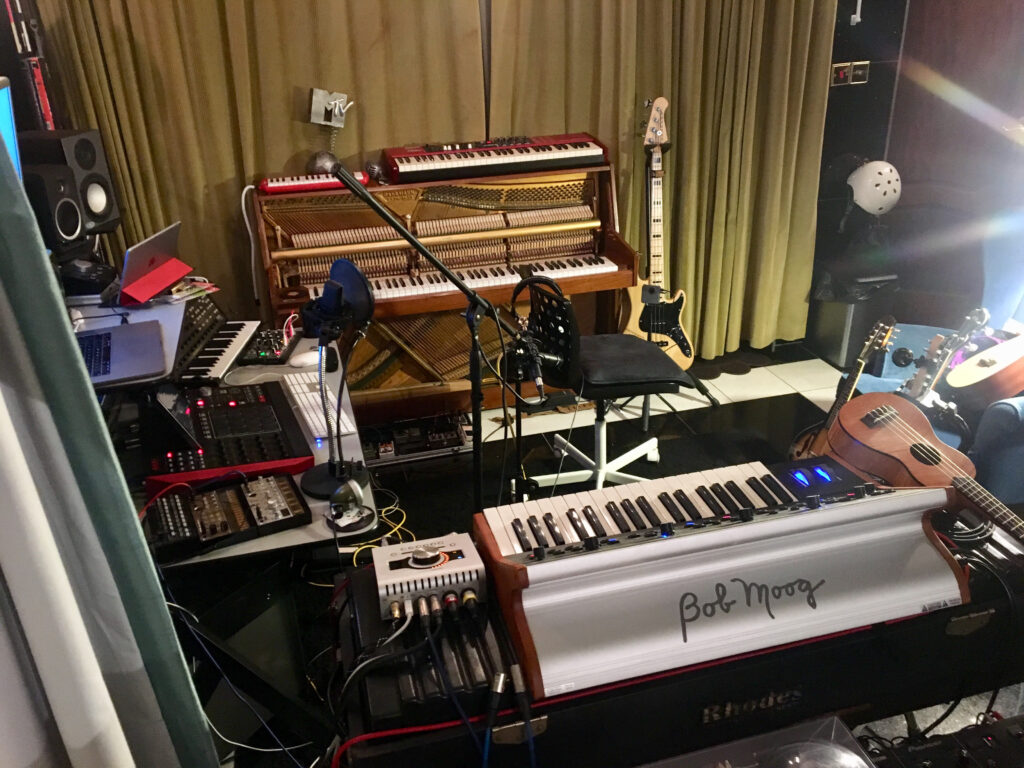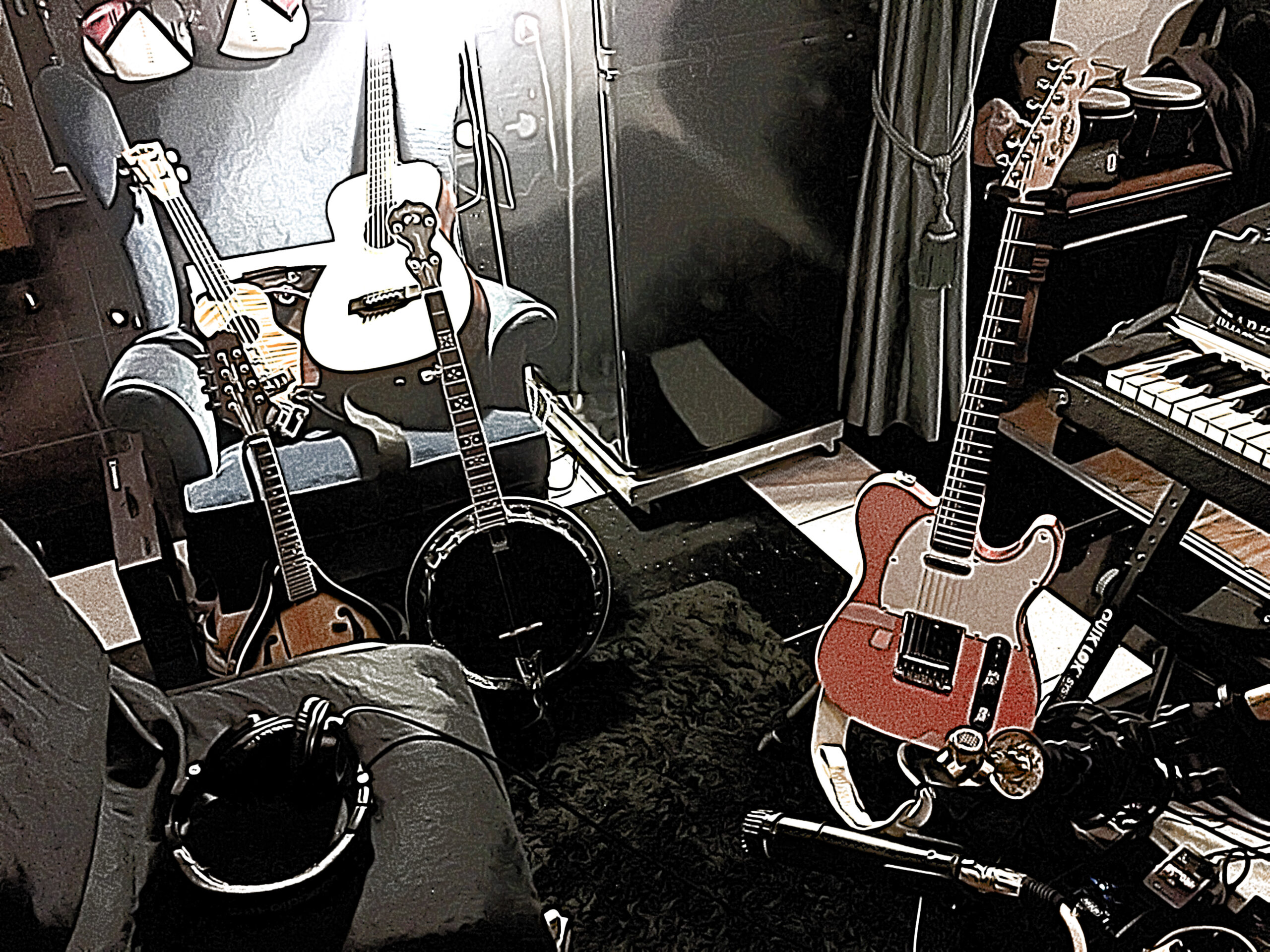Christmas Day today which meant I had a whole day for recording. I thought it was a good time to express some of my Americana ideas which have been festering throughout my last semester of musical osmosis (during this PhD, I have been spending an average of about six months obsessing over a particular style, listening to it almost exclusively and learning or focusing on relevant instruments to perform it—the last few months have been dedicated to Americana). I took the dust off the banjo, and retuned the mandolin and ukulele. Spent the day practicing a simple riff on mandolin (after reminding myself of the chords using an app—which I repeated for the remainder instruments) and then mirroring it on ukulele and acoustic guitar. I thought it would be a nice layer to add some banjo arpeggios on top. Perhaps some Telecaster electric and either a Wurlitzer piano or my somewhat out-of-tune upright would give it a nice honky tonk finish. I tapped the tempo on the MPC drum machine and coming back and forth between the studio and kitchen I cooked an inspired shrimp pasta sauce layering a beat that I thought would be complementary to the stringed-instruments’ motif (one of the nice things about studio apartments is that you can zoom out from over-focusing on individual musical elements, by engaging with some parallel tasks and refreshing your ‘macro’ vision / aurality?)
I decided to dig out the Sennheiser Ambeo VR mic with its four capsules (something I won at a recent internal academic bid), which is designed to record in an Ambisonics format. I thought that using only two of the capsules would give me a nice stereo picture on the acoustic instruments. After reading the detail on the wiring, this worked out well, but I also doubled it with a Shure SM57 to both get a ‘dynamic’ flavour on the recordings, but also a closer, mono perspective (furthermore, I do favour the good mic / bad mic combination on a lot of sources, as it provides options when mixing in terms of different spectra, but also different envelope characteristics—the condensers catch more transients, while the dynamics provide more ‘compressed’ results). As a result of my previous experiments, I felt that the slightly farther, stereo recording would provide a consistent layer of ‘space’ to each recording adding to their combined sense of spatial ‘glue’. I wanted the individual recordings to feel as if they had been recorded by a bunch of musicians in the same recording space.
The spatial side was only part of this pre-meditated vision/aurality toward sonic consistency. I felt it was equally important to infuse character onto the recordings by means of a ‘colourful’ signal flow. So, I ran the SM57 through my trusted LA-610 preamp/compressor, with quite a bit of tube gain, some equalisation highlighting the high frequencies (10 kHz) and cutting the room ‘mud’ (at 200 Hz), plus some optical compression. The signal path is completed by a dbx160 compressor—hardware as well—acting faster and only on the peaks, before hitting the Prism Orpheus interface (itself with soft-clipping enabled on all its inputs, to protect from any digital overloads). Deploying dynamic control discreetly in stages, rather than singlehandedly in an obvious way, is beneficial to both the musicality of the results, but also a trouble-free recording scenario, where I can gain-stage conveniently, focusing on performing and enjoying a more record-ready (phonographic?) result on the foldback. I inserted virtual versions of the 610 preamps on the two sides on the stereo microphone, and tape machine emulations on all incoming channels with Nashville/country-inspired settings (speed, tape formation, etc.)—all this on the UAD virtual console software. I felt I got a good phase relationship between the 57 and the Ambeo, after some messing around with their relative distance.

After setting everything up, I took a little break to give my fingers a rest from all the practicing and to re-engage with the studio in a refreshed ‘macro’ perspective. I layered the mandolin first, then let it cycle, trying the ukulele on top. I had a camera (GoPro) on my head, which I’ve got used to and I don’t feel it makes me too self-conscious any more when recording audio. Nevertheless, it does keep me very focused, speeding up my workflow as I am aware that the high resolution videos can be lengthy and sizeable in terms of computer space, also resulting in longer reviewing and editing times. I tend to use this urgency when tracking now. I listened to how the uke was sounding over the mandolin and enjoyed the same EQ settings (as the ukulele is softer sounding and the persistence in highs and room de-mud-ifying appeared helpful). After a practice ‘lap’ I tracked it as well, quickly following it up with the Martin acoustic guitar. Following the same audition, review and record workflow, I tracked the acoustic guitar and banjo, with minor alterations to the mic angles and preamp settings.
It is at this point that the resulting sonic ‘glue’ became apparent in an obvious, pleasing ‘phonographic’ sense: the layers of instruments with the complimentary EQ strategy, captured space and same preamp/tape colourations started to add up to more than the sum of the parts. By the time I reviewed the fourth layer (the banjo)—each captured on three channels (one for the dynamic mic and two for the stereo recording)—I was listening to twelve tracks with shared characteristics and an augmented sense of shared space. There was ‘glue’ in their image and depth, but also in their timbral footprint, leading to a sonic sensation that felt both vintage and ‘complete’. Reminiscent of an era, style, location but also characterful enough that it would stick out as a potential sample. One particular aspect that illuminated this upon playback was how being incrementally layered, the ‘wall of sound’ reached a point where it blended with the vinyl crackle I had sampled and programmed as part of the MPC beat. Much less than a self-fulfilling prophecy, the instrumental mix and the crackle merged into a single aural sensation, feeling like the whole thing had been lifted off an Americana vinyl record.
Once I (mentally) noted this epiphany, I wanted to push it further. So, I ran the mix through (Massive Passive) mix-bus EQ, (API) compressor and (Ampex) master tape emulations, paying tribute to the relevant sonic references with my choice of tools and settings (generally, inspired by analogue, Nashville sonic signatures). I added some Telecaster licks using the incremental signal chain I had finalised in yesterday’s recording sessions (I recorded two tracks, one blues-funk and one psychedelic/southern-soul, focusing on developing a strong guitar signature through a combination of hardware pedals and software emulations of amp, preamp, tape and spring reverb).

Finally, I tracked the Lakland Jazz bass with the LaBella flats and a Nord Wurlitzer patch through the hardware LA-610 with minor gain-staging and EQ adjustments for the same complimentary consistency, and tweaked the stereo placement of these final additions aiming for a retro “W” image. As the tracks looped around I consciously appreciated the ‘wall-of-sound’ effect, striking a pleasing balance between overall mix ’glue’ and individual instrumental definition, albeit with shared, complimentary characteristics. I asked myself the central question: would I sample this? Oh, yes, I would.
It’s late now, so I can ‘hear’ in my mind’s ear, how this will benefit from some live percussion, specifically tambourine, egg shaker and bongos, which I’ll track tomorrow. And although I am very pleased with the realism of the Wurlitzer patch (enhanced by the tube characteristics of the LA-610), I should also try my decidedly honky-tonk upright (before I get it tuned); if there’s an era where it would fit as such, it’s definitely the country one.

PS: A potential danger of this workflow, however, is that by getting so involved in the phonographic (re)construction aspect, the end result—despite the beat running alongside it—does not feel very hip-hop. I am aware that this is because I am immersed in the ‘source’ so to speak, and as noted earlier, the beat is only there to provide guidance and context. But I need to note this concern down, to be aware that there will be a phase during which I will have to draw myself out of ‘source’ mode, and back into ‘samplist’ and beat-maker, chopping the sources and focusing on defining a contemporary ‘edge’ to the beats.
